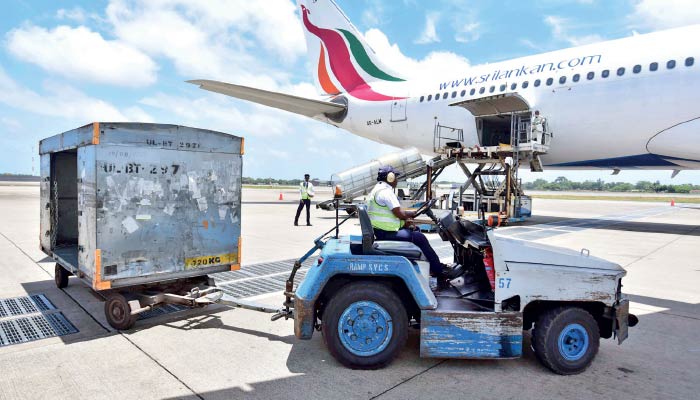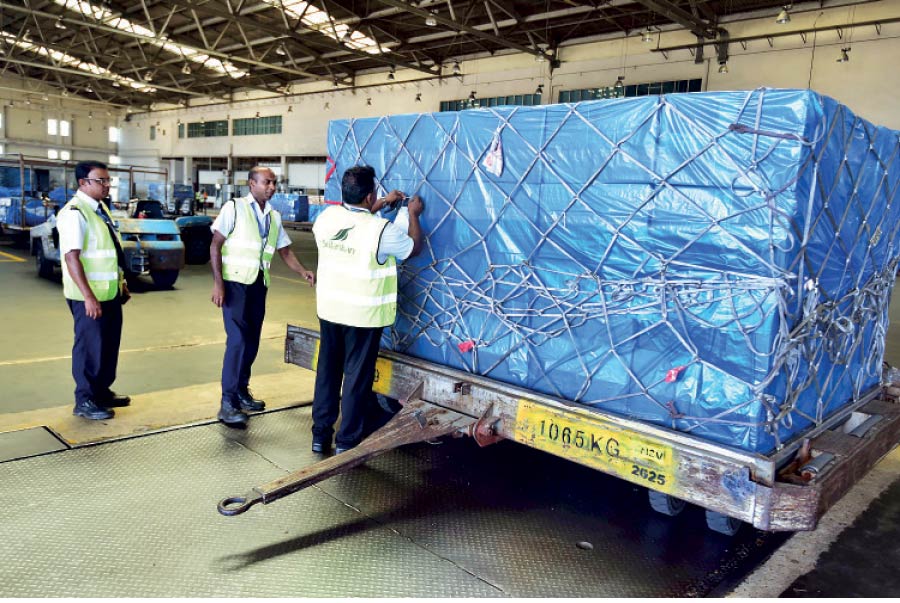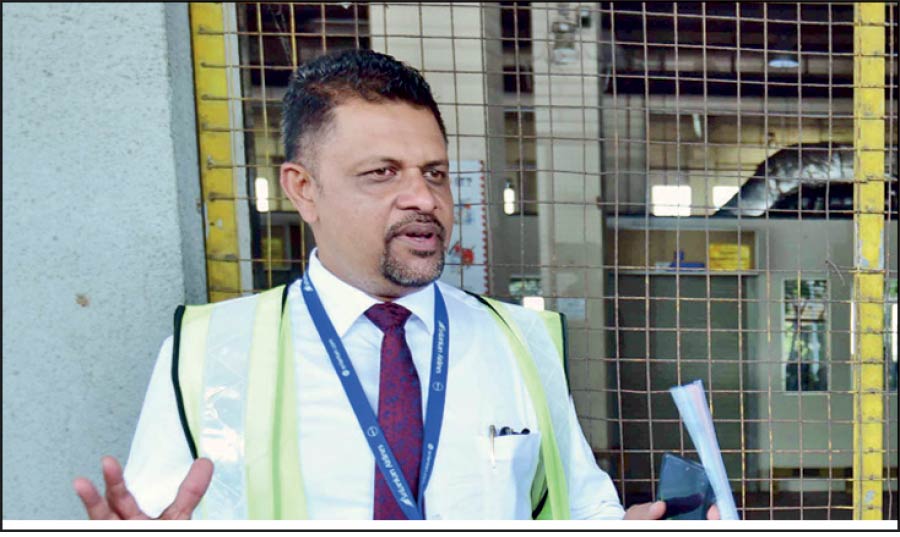Thursday Dec 18, 2025
Thursday Dec 18, 2025
Monday, 25 August 2025 02:10 - - {{hitsCtrl.values.hits}}

Cargo being loaded onto a SriLankan Airlines aircraft at BIA

SriLankan Airlines staff securing freight at the cargo terminal

SriLankan Airlines Cargo Operations Manager Shehan Fernando
By Divya Thotawatte
Positioning Colombo as a regional hub for transhipment and e-commerce, SriLankan Airlines is set to double its handling capacity with a new cargo terminal at the Bandaranaike International Airport (BIA) by the end of 2025.
When it begins operations, the new facility will increase annual handling capacity from 250,000 metric tons to over 500,000 metric tons. “It currently handles 250,000, and another 250,000 we can add,” said SriLankan Airlines Cargo Operations Manager Shehan Fernando.
He explained that the expansion was initiated before the COVID-19 pandemic. At the time, cargo volumes had been steadily increasing and projections had indicated that existing facilities would not be able to facilitate future demand. To address this issue, the airline had initiated plans for an additional terminal to enhance its capacity.
Despite the global trade slowdown during the pandemic, construction continued because the plans were already underway, reflecting the airline’s long-term vision to strengthen Colombo’s logistics capacity.
The new terminal building was already complete, but the airline is currently finalising the installation of cabling and IT infrastructure. “Still the authorities have not given us the building. Probably by the end of this year, we are hoping to get it in our hands.”
Fernando highlighted that Sri Lanka’s strategic geographic location was central to the airline’s plans, allowing it to attract and divert excess cargo from India as well as from flights operating between Australia, Europe, and other regions that travel across SriLankan airspace.
With many international flights passing through Sri Lanka’s airspace, Colombo could emerge as a transhipment hub, he explained. “Planes are precious and most of the people are targeting this area. We are aiming to establish Colombo as a key hub. So that is our target.”
However, currently, cargo handling faced limitations during times of peak demand, and the new terminal aimed to eliminate these limitations, he added.
Most of the cargo handled by SriLankan Airlines consists of general freight, but there is also growing demand for perishables such as pharmaceuticals, vegetables, fruits, and frozen seafood, including tuna. The airline is also preparing for the rising volume of e-commerce shipments, including goods from platforms like AliExpress and eBay.
The new terminal will be dedicated exclusively to imports, which will free up space in the existing facilities. The airline therefore plans to convert the current import terminal into a specialised perishable centre and an e-commerce hub to handle the anticipated surge in online retail shipments.
Existing terminals will also be reorganised, with one becoming a virtual logistics centre and a Korea hub, and the new export terminal dedicated entirely to general cargo. This reorganisation will increase capacity significantly and allow the airline to handle a wider variety of goods efficiently.
Fernando also highlighted the broader economic benefits of this expansion.
“Most people are reluctant to import items… but now we can see people are investing and importing goods. The business trend is now to get into some activities, not like earlier. Our hope is to have more business in Colombo and out of Colombo, and bring more transhipment into Colombo,” he added.